27 Green Uses for Vintage Linens
Upcycle vintage linens with these 27 project ideas. Learn why you need to buy that linen piece you found at the thrift store or garage sale. These crafts from recycled vintage linens are for every skill level and will make a unique, thoughtful and one-of-a-kind gift.
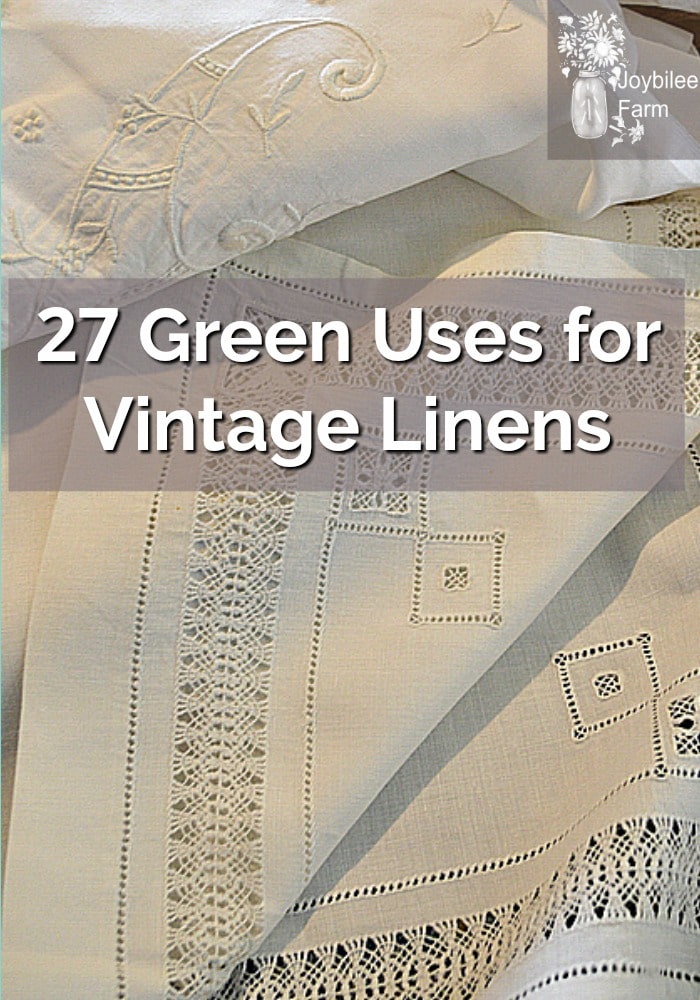
Linen is a remarkable and rare natural fibre. It’s more durable than cotton. It’s stain-resistant and soil-resistant. Antique linens are also lint-free. Heirloom linen can be found in thrift shops, second-hand stores, estate sales, auctions, and antique malls. It has a unique crispness, which the trained hand can feel. Cool to the touch, if you squeeze it, it responds with defined wrinkle lines. Unless it is pressed a folded edge will be curved and springy. Yes, you need to iron it if you want to put it on a table and see the shiny, exquisite surface glow in the candlelight. But it doesn’t need to be ironed for every purpose. Antique textiles can be family heirlooms or vintage treasures found at garage sales, thrift shops, flea markets, or antique stores. You might even find antique linen on Etsy.
Two kinds of linen fabrics
In this article, I’m not speaking generically about linen to mean any household textile, but rather the specific household textiles made from fibres of the flax plant. There are two types of vintage linen but many weaves of linen. Linen is the exquisite long fibres combed from fibre flax stocks that are put through a tortuous and elaborate process to release their treasured fiber. Tow linen is the discarded shorter fibres that are a waste product of hackling the longer linen fibres. Technically tow is not linen, as linen by definition is a fibre that is at least 12 inches long. But the definition of linen has changed drastically since 2008. Today most vintage linen will still be made from the longer linen fibres and will retain all the amazing qualities found in linen. New linen may no longer be of this high quality. Reputable linen shops like the Irish Linen shop in Victoria, BC (one of my most favourite stores) will be able to advise you on your purchase of new linen.
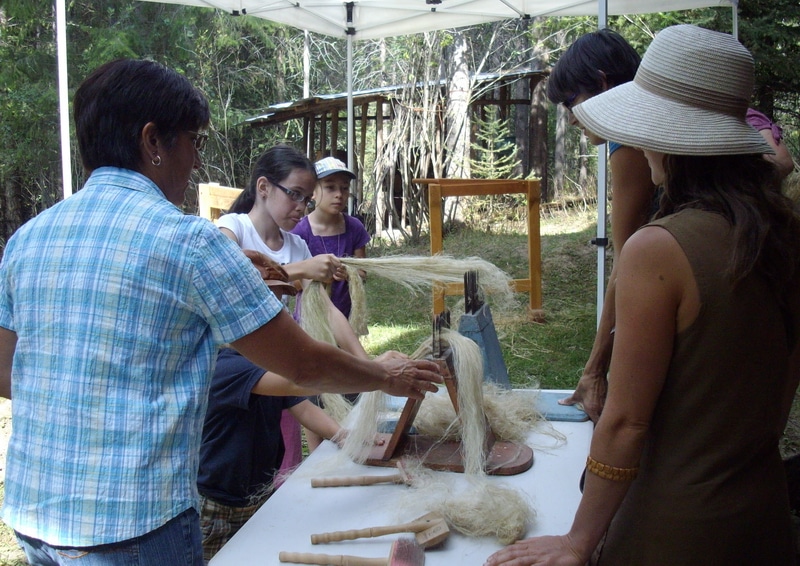
Qualities of linen
- Sheen
- Soil resistance
- Wicks moisture
- Bleaches and disinfects in sunshine
- Long-wearing
- Lint-free
- Crisp hand
- Beautiful and sensual
- Non-irritating
- Non-allergenic
- Generally chemical-free
- Nontoxic
- Nontoxic when burned
- Cool to the touch
How to clean old linen
To clean old linen, first, check for soundness. Don’t try to wash antique linen that might be compromised. Antique linen of great value should be cleaned by a curation professional in fabric restoration. But if your linen is sound, with no holes or weakness, and you intend to actually use it, just put it in the washing machine in your light-coloured load. If there are stains, many can be removed by adding a ½ cup of washing soda to the wash and then hanging the linen on a clothesline in full sun. Sunlight naturally disinfects and whitens linen fabric. Polyesters tend to hang on to their stains but linen releases stains. If that doesn’t do the trick, you can flood the stained area with a small amount of hydrogen peroxide. Dab a little baking soda on the stain, brush into the fibres with a soft toothbrush and let it sit for an hour. Then launder as usual. This should release the stains.
Use them as table linens
Use them as they were intended in your home
Linen table cloths and napkins are unlike any other household linen. They get better and softer with repeated washings. They continue to iron up crisply with a sheen that only linen displays. If you are blessed with heritage linens from your grandmother or mother, use them. And be delighted that your thoughtful relatives kept them for you. You can’t get linen-like old linen anymore.
If you plan to use old linen tablecloths on your dining room table, you’ll want to iron them. Iron with a steam iron on the hottest setting – the linen setting. Spritz the fabric with a natural linen spray. (You can find the recipe that I use here.). The wrinkles will disappear like magic, leaving behind a smooth, sheen on the surface.
Repurpose vintage linens as household linens
Replace disposable paper napkins with linen napkins
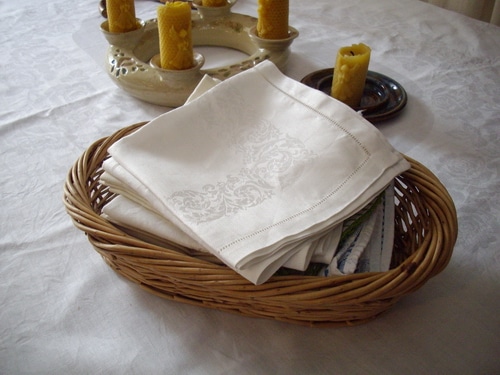
You’ll notice with damask weave napkins that the pattern on the napkin is a miniature version of the larger pattern on the table cloth. Matching napkin and tablecloth sets in vintage linen are worth a lot. A new set will cost several hundred dollars, while a vintage set in good condition is worth even more, because of the higher quality found in the older linen. Please don’t cut up a beautiful set in good condition for any of these projects. Use them instead on your own table or give them as a gift to someone you love. But if you have stray napkins or damaged tablecloths, the remainder of this article is for you.
Cut damaged linen table cloths into smaller napkin size pieces – hem with a machine stitch and the tablecloth will have new life.
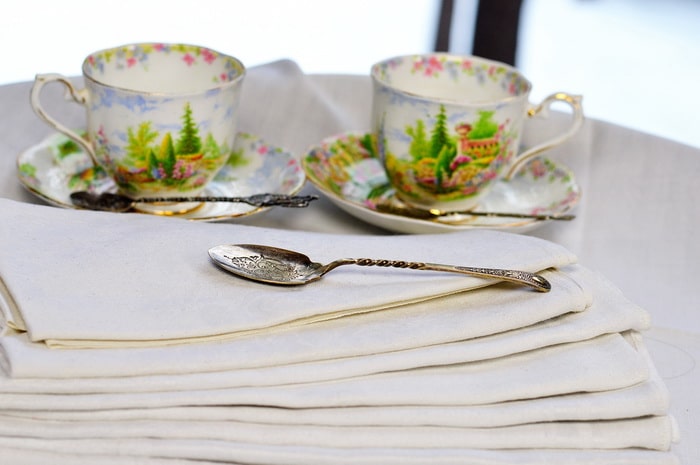
Use old linen as tea towels
The Edwardian maids and butlers cleaned their household glasses and silverware exclusively with linen cloths. Long fibered table linens are lint-free. Lower quality tow linen, woven from the shorter waste linen fibres, will be linty but very absorbent. Larger dinner napkins are the perfect size to be used as tea towels. Larger damaged tablecloths can be cut into smaller sizes, hemmed, and used as tea towels, as well. Don’t be hesitant to repurpose linen as tea towels. Linen towels will outlive their cotton counterparts by many years if they are made from the longer, quality linen fibres.
On the other hand, most modern linen towels, have been cottonized, so that they can be easily blended with cotton fibres and processed on the same machines that are used for cotton. Cottonized linen has been mechanically and chemically treated to shorten and weaken the linen fibres. It lacks the longevity and wear of older linen. If you are buying new linen towels be sure that you are getting real long-fibered linen and not cottonized linen.
Get rid of disposable products with old linen replacements
Turn old linens into handkerchiefs – get rid of the Kleenex® box
Linen is the most natural fibre to use for handkerchiefs. It is lint-free and won’t increase airborne allergens. It can be sterilized with an iron. It is stain-resistant and isn’t easily damaged by hard washing. It can be sanitized in sunlight. You can simply repurpose table napkins into handkerchiefs, but a better strategy is to cut an older tablecloth, one of the finer woven ones, into 12-inch squares and hem them. A new linen handkerchief today will set you back $25. But you can make dozens from a single table cloth. I regularly find linen tablecloths in the $4 to $10 range at thrift shops here in British Columbia.
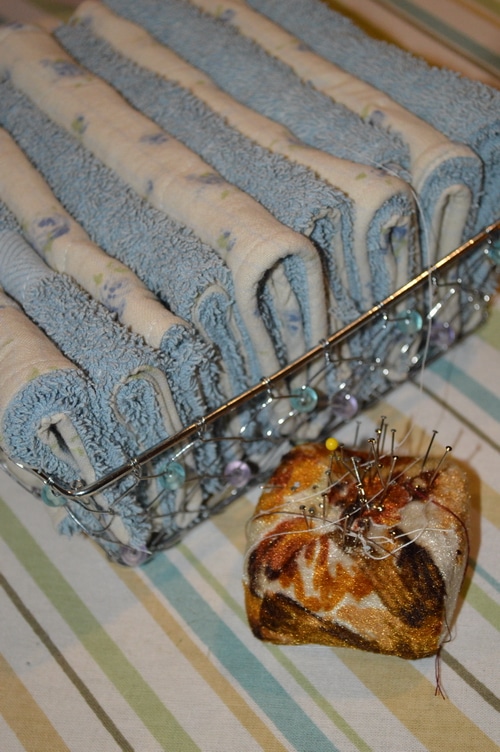
Replace your paper towel roll with linen cloths
Linen is super absorbent. It is lint-free. You can increase its absorbency by doubling up the layers or backing a linen layer with a layer of towelling, for big spills. Simply cut out rectangles that are sized for the paper towels that you like to use – 10 x 14 or 10 x 7 are popular sizes. Put two layers of linen or a layer of linen and a layer of towelling together. Stitch with an overlock stitch to secure the edges. Press and they are ready for use. You can roll them in a paper towel roll by affixing snap closures or buttons and buttonholes to either side of each towel and roll them on your paper towel rack. Or just leave them in a basket. Find the pattern here.
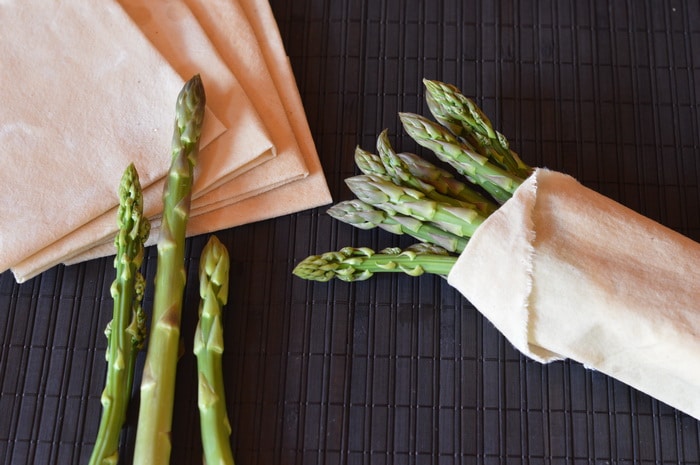
Replace your plastic wrap with wax impregnated linen napkins or rectangles cut from old table linens
Old linens are usually dye-free and bleach-free. Older linens were bleached with washing soda and sunlight. They don’t give off dioxins nor formaldehyde and are free of BPA. You can safely use them for food wraps. Impregnate hemmed linen cloths or napkins with melted beeswax and allow to dry. They can be used in place of plastic wrap for food storage. Use the tutorial here to create beeswax wraps from your vintage tablecloths.
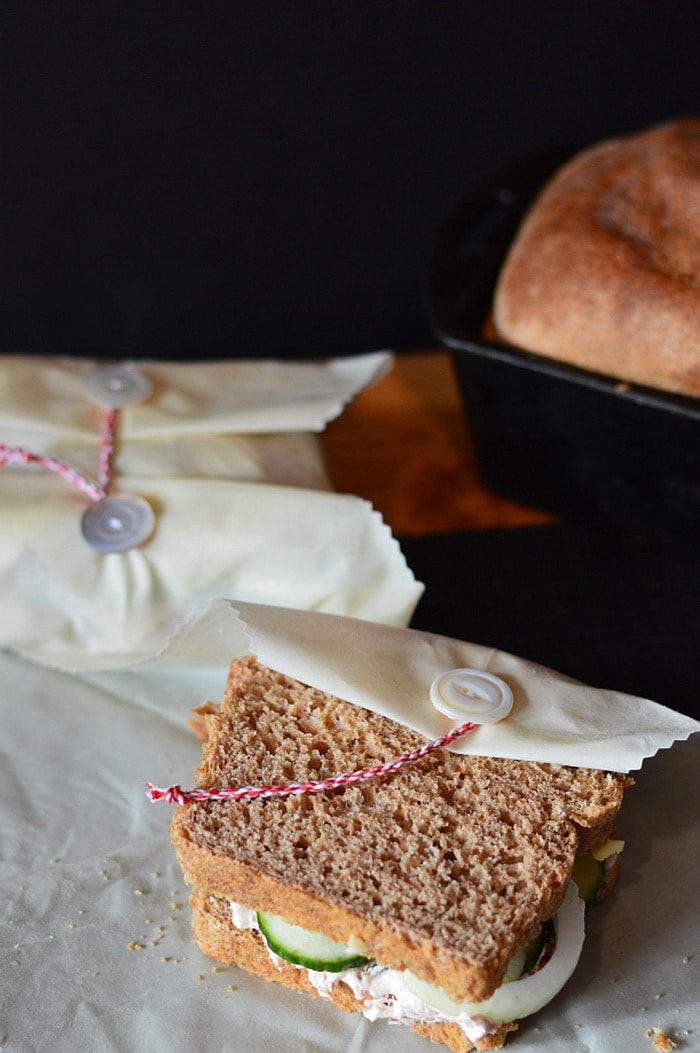
Sandwich bags from old linen
Wax impregnated linens can be sewn into sandwich bags and snack sacks
Wax your flat linen fabric and then make a sandwich bag by Folding and stitching. The bag can be closed with a button closure. This makes a nontoxic eco-friendly lunch bag.
But even without the wax, linen keeps your snacks fresh by absorbing moisture. See if a drawstring sandwich bag works for you. The ideal size is 4 x 6 inches.
Reusable lunch bags
A few years ago sewing reusable lunch bags out of plastic table cloth sheeting (aka fake oil cloth) was popular. I made a couple. But they smelled strongly of vinyl and weren’t exactly healthy and eco-friendly. Just cutesy. You can use heavy damask linen instead and make a reusable lunch bag that you’d be proud to take to work. It is lightweight, reusable, eco-friendly, biodegradable, and green. It can be flattened to carry home in your purse or computer bag. Close with a pretty upcycled button and a decorative buttonhole. Use this pattern but cut it out of heavy linen canvas or damask instead of plastic.
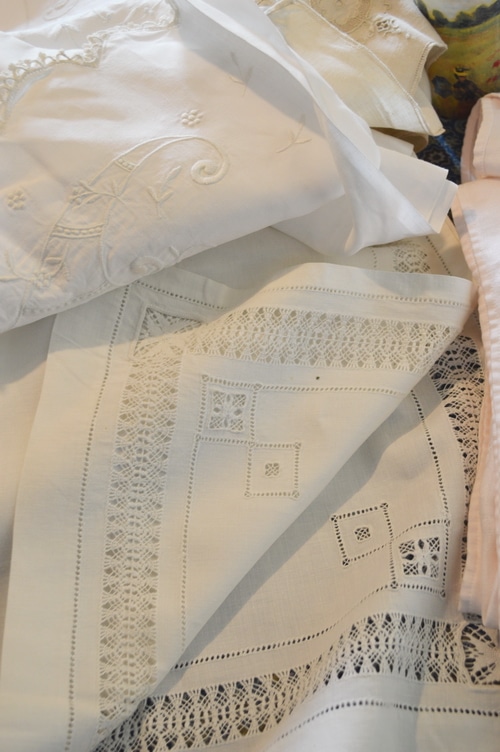
Reusable produce bags
Linen is better than plastic because it naturally absorbs moisture and then releases it back into the food. It also keeps the food cool. It’s naturally antibacterial. Stitch up some reusable produce bags from thinner linen tablecloths or table runners, to take to the farmer’s market and the grocery store. Lighter-weight tablecloth fabric won’t significantly increase the weight of your produce at the scale and will save plastic bags. Linen is breathable and long-lasting. Make them last for years with French seams. Ideal sizes: 5 x 8 inches, 9 x 12 inches, 14 x 16 inches, and 20 x 14. You can decorate them with iron-on pictures or stamp them with fabric paints to make them prettier. Linen takes dyes and fabric paints well.
Wrap your produce according to produce type when you get it home from the market, using linen bags and beeswax impregnated squares for longevity.
Reusable bread bag
I’ve been looking for a solution for plastic bread bags that didn’t involve resurrecting my wooden bread box to the countertop. I think I’ve found it. People have been using linen to store bread for years. Linen is naturally antibacterial. It is breathable. Linen bread bags work by absorbing moisture and releasing it back into the bread, keeping your bread from drying out. Stitch up a reusable bread bag with the drawstring closure for storing your homebaked bread and artisan sourdough bread. Use French seams and you’ll create a bread bag to use over and over again for years and years. These make lovely wedding gifts, too. And with the drawstring, you can even hang your loaves out of the way. Suggested sizes: 13 x 15 for rolls and artisan bread, and 7 x 25 inches for baguettes.
Here’s a tutorial to get you started on Attainable Sustainable.
Wrap a gift
Gift wrap – use linen and ditch the disposable wrapping paper
A square linen napkin makes exquisite gift wrap. Use Furoshiki gift wrapping techniques and wow your friends with gift wrap they can use again, like a tea towel, or napkin. Wrap smaller gifts in cocktail napkins or wrap larger gifts in vintage sheets or pillow cases. These equisite gift wraps can be used again and again.
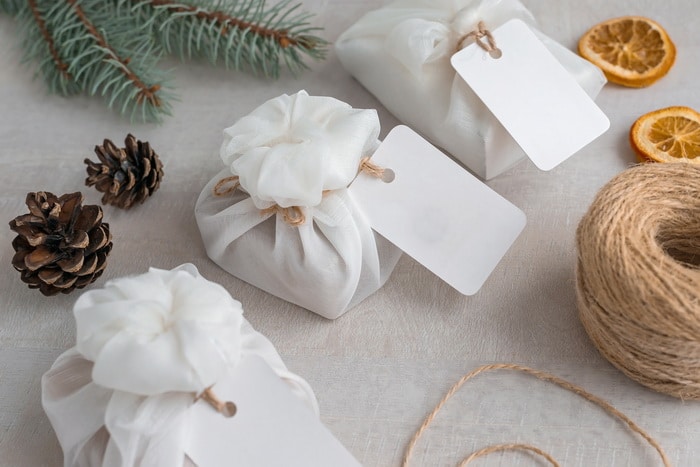
Make gift bags
Because linen is a natural fiber it takes dyes, fabric paints, and other fabric embellishment techniques very well. You can decorate your vintage linen fabric and then sew gift bags that can be reused year after year. Consider repurposing vintage linen with embroidered embellishments for this project and give some new life to another woman’s labour of love. Use your artistry and save $$. Dollar store gift bags are $1 to $4 each here in Canada and a single vintage table cloth can make dozens of gift bags that can be reused year after year.
Make a gift
Heirloom linen that’s been handed down generation after generation can be repurposed as gifts for grandkids, nieces, and nephews. Create a sewing project that utilizes heirloom linen for toys or comfort gifts to help younger members of the family remember relatives that are no longer with us.
Make a teddy bear
A stitched teddy bear made from grandma’s table cloth can share the blessings around the family tree. For this, you’ll need to find a teddy bear pattern in a book or online. Teddy bears stitch up quickly and can be made as simple or as elaborate as you have time for. Jointed legs, embroidered features, and personal embellishment can create an heirloom bear from heirloom linen. Find pattern books at your local library oron Amazon.
Make a rag doll
One of the most difficult things about making a rag doll is finding appropriate flesh-toned fabric for the doll’s body. Vintage linen is often the perfect colour already, but you can make it less white by staining it with tea, coffee, or cocoa before you cut out the body shape. Embroider a face and a heart and create beautiful clothes out of fabric scraps. Find pattern books at your local library or on Amazon.
Make a heating pad/comfort bag
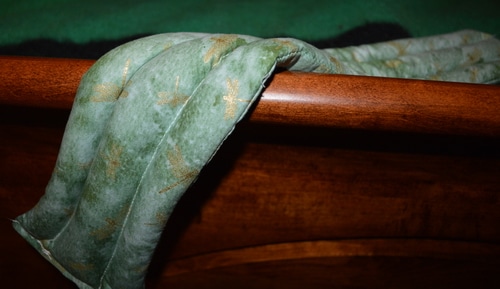
One linen napkin is big enough to make a neck heating pad/comfort bag and a pair of hand warmers. Fold the linen napkin along the long edge in thirds. One third will be two hand warmers and the other two-thirds is folded in half and stitched for a neck heating pad. Follow the directions here. Fill with rice or flaxseed.
Make a baby sunbonnet
Baby sunbonnets were traditionally made from handkerchief linen. Here are the instructions to make a baby bonnet out of a linen handkerchief.

Make a bed pillow sham
Remember grandma with a pillow sham from her table cloth or use embroidered dresser scarves for this sewing project. Size it to the pillow inserts available at your local bed and bath store. Embellish it with embroidered names and dates on the back. You can print the linen fabric with a picture or one of grandma’s colloquialisms, before stitching. The materials that you need to print on fabric with your inkjet printer are readily available and easy to use.

First Aid
Bandages for your first aid kit
Before sticky bandages and sterile gauze became readily available, women used to tear linen cloth into strips and roll it into bandages. Linen was the fabric of choice because it could be sterilized by boiling or ironing, it was lint-free and wouldn’t infect a wound, and it was naturally antibacterial. During WW1 women at home tore up old linen bed sheets and tablecloths and sent the bandages to the war front to help in the war effort. The longer linen fibres are less likely than cotton to stick to a wound but to gently remove it, soak it in warm water before lifting it off a scab.
Use it as a sling
Cut a 40-inch square and keep it in your first aid kit to be used as a sling. Linen is ideal for sling material because it is non-stretchy and will help to immobilize a broken or sprained arm or wrist.
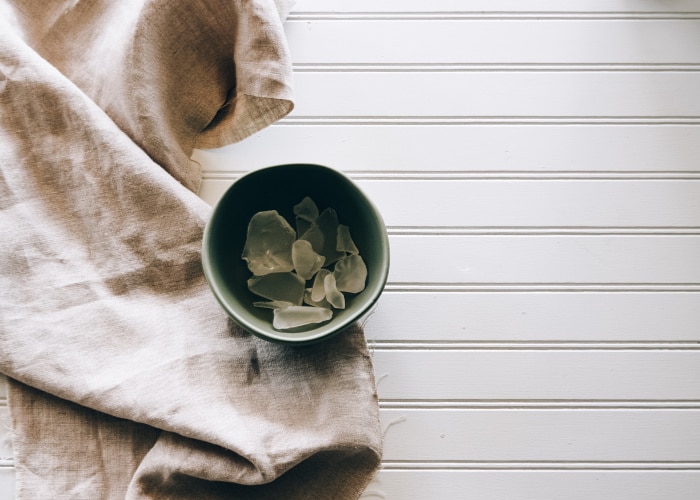
Decorate with vintage linens
Make café curtains
The large, expansive linen tablecloths are seamless and offer ample fabric for café curtains. Add a cheerful gingham strip along the bottom, to add weight and colour, and make them hang well.
Convert old linens into accent pillows
Much of the old linen I’m finding in thrift shops is stiff linen pieces already stamped with embroidery patterns. Often, these natural beige pieces were never attempted or never completed. The linen is beautiful, and the embroidery stamping will wash off. You can embroider the stamped pattern, embroider your own pattern, or leave them plain. They make the perfect canvas to add your own personal touch in patchwork, fabric stamping, heirloom sewing, embroidery, or applique. You can sew it into a pillow by seaming up three sides, stuffing, and then sewing the fourth side closed. Or you can make a pillow slip by overlapping fabric at the back of the cushion and leaving it open to insert a pillow form. Linen is naturally soil resistant and long-wearing. A well-made accent pillow will last for many years.
Make an ironing board cover
Linen is the ideal ironing board cover because it isn’t damaged by the highest heat of an iron. Most ironing board covers today are made of cotton that has been coated with toxic flame retardants to prevent them from scorching. They are padded with toxic plastic foam. Plastic releases toxins when heated. On the other hand, Linen is naturally scorch-resistant. To make an ironing board cover put wool batting or cut a damaged wool blanket to size, between two pieces of linen and insert a pocket for elastic around the outer edge. Size it to fit your ironing board.
Wear old linens
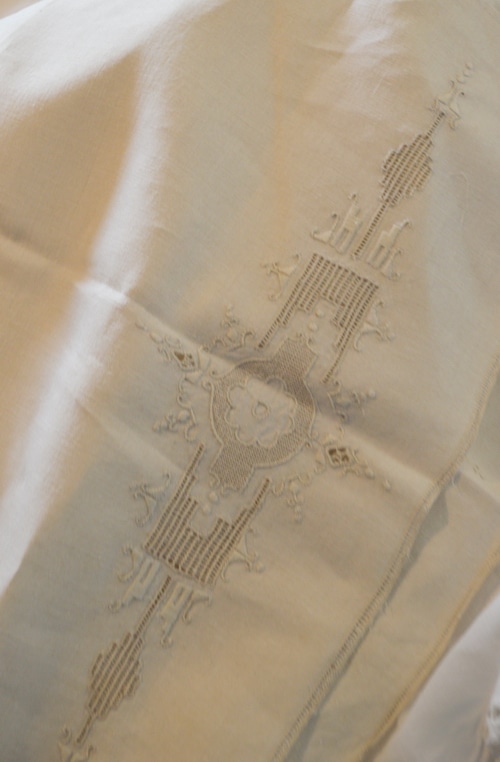
Make a child’s sundress
Linen is cool in summer. It wicks moisture away from the skin. It gets softer with each washing. Older linens have already been conditioned and make exquisite summer clothes. Choose a tablecloth that is showing some wear and tear and cut around the worn spots for a lovely child’s sundress. If you have vintage embroidered linen pieces, consider using them in this project, and giving new life to another woman’s labour of love.
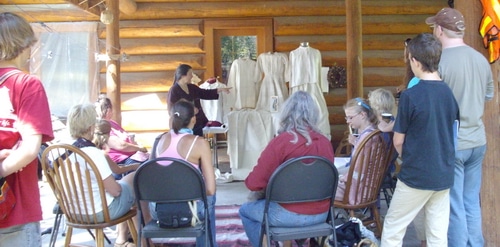
Make an heirloom nightgown
Linen nightgowns are the perfect foil for heirloom sewing techniques like pintucks, gathers, lace, and embroidery. Turn a soft linen tablecloth into an heirloom nightgown for summertime wear. For an adult nightgown, you may require two tablecloths of similar weight. A child’s nightgown can be sewn from a single tablecloth. Again with this sewing project, consider using some of the pretty embroidered pieces and giving new life to another woman’s handwork.
Make an apron
Many of the tourist linens from Belgium, France, Holland, and Ireland are printed in bold prints and never used. These are sturdy fabrics and can be used in gathering aprons and harvest aprons. Find them in your local thrift store or flea market.
Artworks
Make artist canvas
Fine art canvases are often made from evenly woven linen canvas, stretched on a frame, and then primed with gesso to prepare it for paint. While many vintage linen tablecloths will be too fine for this application, heavier linen canvases such as linen towelling and linen canvases will work well. Consider creating a work of art from the fibre arts of the past.
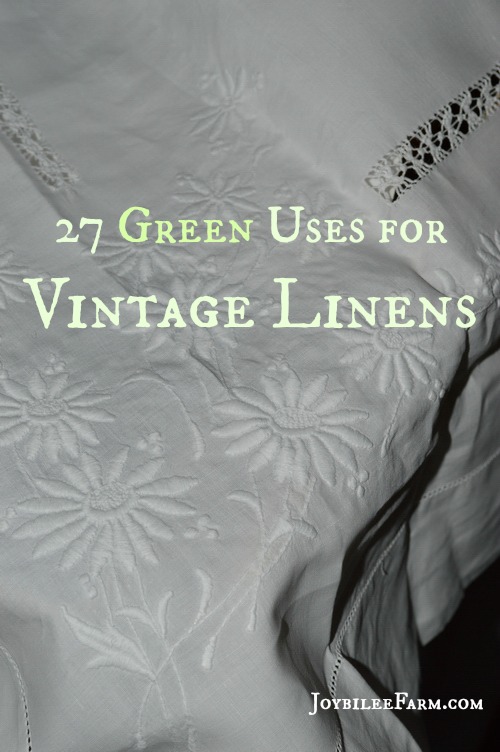
This is just a shortlist of all the wonderful projects that can be made out of vintage linen napkins, tablecloths, handkerchiefs, towels, and other beautiful artisanal embroidered work that you find in your local thrift store, second-hand shop, or antique store, or maybe just in Great Grandma’s linen closet. While you won’t want to cut up that double damask tablecloth with 8 matching napkins that Great Grandma has been saving for a special occasion since her wedding, for the other, not so special vintage linen pieces these are creative ways to give new life to old linens. I’ve got a few of these projects on my list already. For more ideas check out my Pinterest board dedicated to new uses for vintage linens.


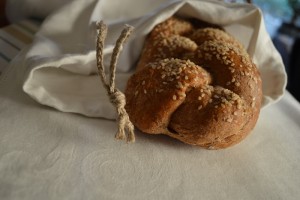

As a long time quilter, I see no reason to say no. Even the quilting design could mimick a design in the linens.
Hello there, I’ve always cherished Irish damask table cloths and napkins and lately found them in thrift shops for very reasonable prices and now I have a hard time leaving them there . Napkins are the best but I’m a newer quilter and was wondering if I could piece a quilt with the damask linen table cloth and quilt it . Can you think of any reason not to do this? My store bought white cotton quilt is really showing its wear…
Please sleep on them! linen is beautiful to sleep on soft and smooth on your skin and that’s what they were made for, They improve ans so often with washing and will give you so much more leisure using them rather than just looking at them.
I made a beautiful balance for a bathroom window out of a ruffle from my great aunt’s petticoat. I had washed it and much of the original starch remained so it had great body. Loved it.
I have just moved. I came across my mother’s linens of which she was so proud. One of them, a very long, damask table cloth, has ripped all the way across it. She still used it for nice dinners, but put a smaller one on top of the rip to cover it. I have never been able to toss either of them, but still preferred to use cotton table cloths as I was afraid to destroy them with spilled gravy or something. Now, you’ve got my mind going full-time with how to use them! Thank you so much.